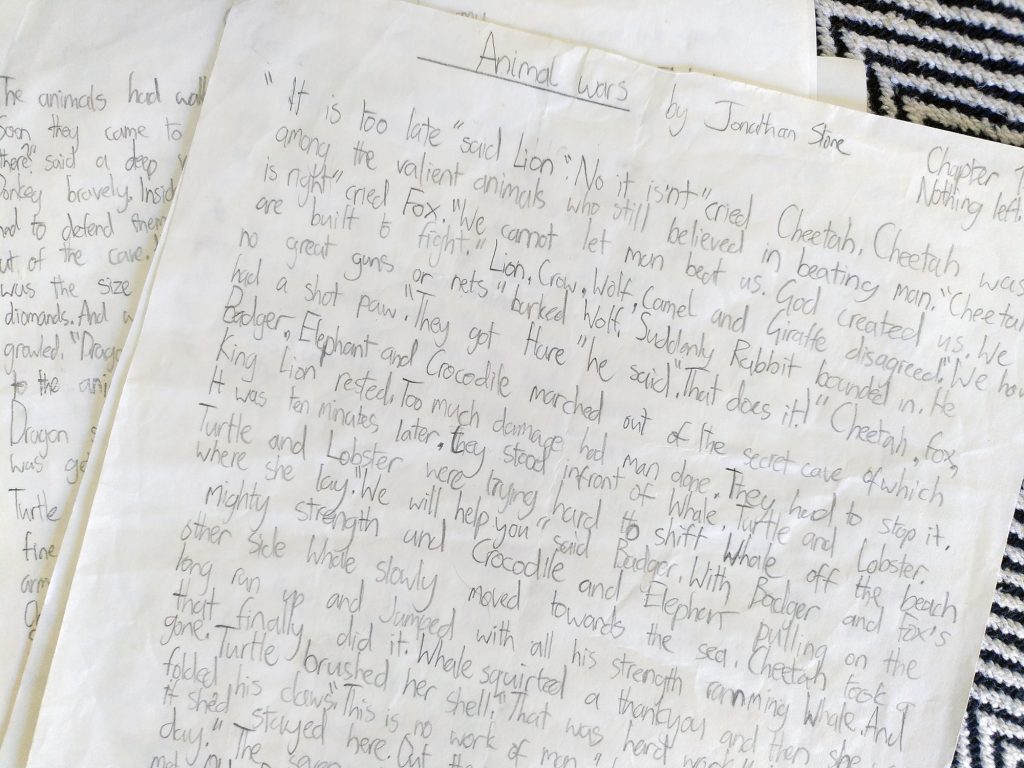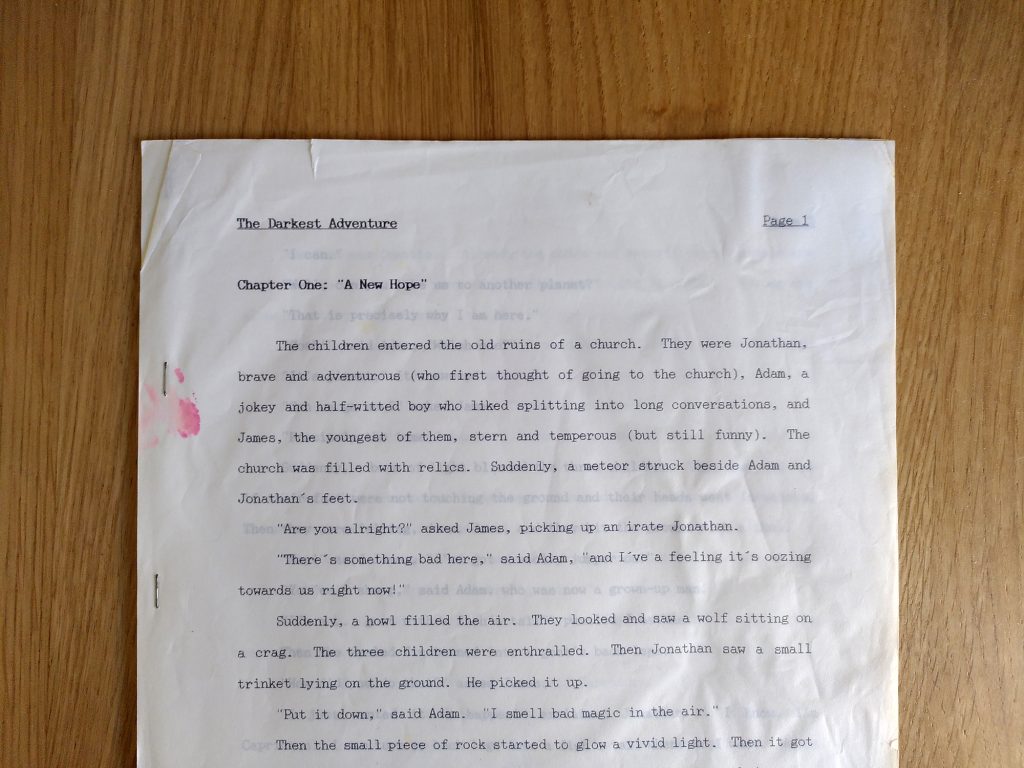Jon’s Adventures in Space was the title of my earliest attempt at a novel, or rather a full-length book — I’m not sure I was aware of the concept of novels as distinct from storybooks at the time. I would have been in primary school, Year 3, so around 7 or 8. Every page was illustrated, and it was supposed to be epic. In fact, it was repetitive — or rather, iterative — in a way that might have suggested I would end up more invested in poetry than narrative. Every few pages, ‘Jon’ would encounter a new space alien, and a lengthy description of its various colours, appendages and instruments of attack would ensue. Then Jon would take a photo of it and proceed to destroy it with … and here would follow a long list of guns and missiles that were fitted to his spaceship. Laser cannons, heatseekers, tracers, ion beams etc.
There was only ever one copy of Jon’s Adventures in Space, and unfortunately I no longer have it. I do have copies of various other stories from around the same time — impossible now to put them in an exact order. I seem to have started out writing in Memo books acquired from my grandparents’ village shop — in these are recorded the adventures of several bears and other soft animals. An ecological theme swiftly emerges; below are several short chapters of Animal Wars, a story in which animals from across the world join forces to eradicate the evil of mankind.

Undoubtedly, this was influenced by the TV series The Animals of Farthing Wood, based on the books by Colin Dann, which aired from 1993. The story doesn’t get very far — the animals ride a dragon over Scotland, meet a puffin, and try to discover the location of the Loch Ness Monster, which requires that Cheetah don a diving mask and breathing apparatus. In the first chapter, ‘Old Dodo’ dies after pleading with the others to build a mighty army.
I was also writing plenty of fan fiction. The oldest typed story in my archive is a one-pager called ‘Paddington Goes Swimming’, with accompanying pictures on a separate piece of card. The water park manager in this story is named ‘John Turnip’, and Paddington, naturally enough, forgets to take his duffle coat off before jumping into the pool.

But after Jon’s Adventures in Space, the next significant landmark, according to my memory, is The Darkest Adventure, a grim attempt at a fantasy novel (I knew what one was by this point, though not how long they were supposed to be). I was so serious about it that my form teacher at the time, Diane Thomas, took it upon herself to type up my handwritten pages, bind them and give them to me as a present. I recall her estimating that it was about 20,000 words in total, though I only seem to have retained the first ten pages:

Again, ‘Jonathan’ is a main character in the novel, and the other two protagonists are based on childhood friends. I don’t think I quite meant to call Adam ‘half-witted’ in the first paragraph — I probably just meant ‘witty’.
Within half a page, the three have visited a ruined church, nearly been struck by a meteorite, witnessed a howling wolf and discovered a magical trinket. This leads to them developing the power to turn into their respective Zodiac signs — in Jonathan’s case, a goat with a fish’s tail. Why I thought these would confer any advantage whatsoever in anybody’s guess, but the three boys are simultaneously charged with the mission of … sigh … saving the world from the evils of mankind. This involves liberating animals, sabotaging factories and compelling armies to lay down their weapons until the world is transformed into one giant national park. Obviously, the first port of call is Calais, to organise frogs, oysters and snails into a revolt against the French.
Imitative comedy aside, the main preoccupation in these stories is either saving innocent lives or dealing with some kind of threat — which is an indication, I would suppose, of what kind of stories we start to tell children once they’ve passed beyond the phase of being entertained by characters engaging in daily routines and have begun to wonder what greater purpose there is.
This is part of a series of blog posts lightly documenting my early writing, mostly to satisfy my completist tendencies, but also with the aim of reintegrating some threads of it into current work, and to better understand the process of writerly development.